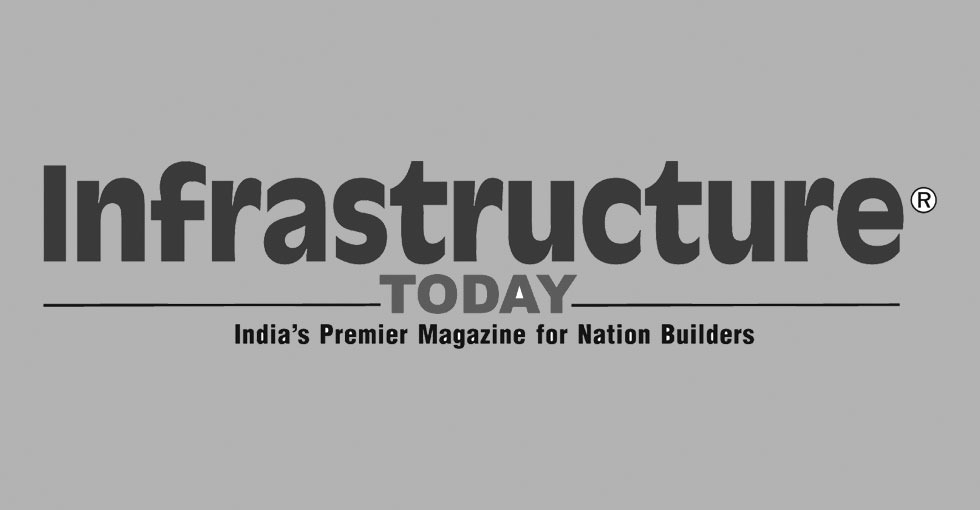Differential tariffs for major and minor or private ports will have a debilitating impact on investment in major ports such as JNPT, says L Radhakrishnan, Chairman, JNPT, in an interview with Janaki Krishnamoorthi. Over the years, the Indian ports sector has witnessed structural changes, with state monopoly gradually giving way to greater private sector participation in port investÂment.
FlashNews:
PM Surya Ghar Rooftop Solar Scheme Crosses 1.95 Million Installations, Delivers 770,000 Zero Bills
Waaree Gets ALMM-II Nod for 5.25 GW Solar Cells
Inox Wind Secures Repeat 100 MW Order from Jakson Green
SITA Strengthens India’s Digital Aviation Infrastructure as Passenger Growth Accelerates
India moved from power scarcity to sustainability, says Piyush Goyal
GM Rao Urges Andhra University Alumni to Drive Innovation, Entrepreneurship and India Growth Story
India Begins Hydrogen Car Trials as Minister Joshi Drives Toyota Mirai to Parliament
MNRE Refutes Financing Pause; Calls for Expansion into Upstream Solar Manufacturing
IndiGrid to Acquire Gadag Transmission for ₹3.72 Billion
India Launches First All‑Electric Tug at Deendayal Port, Accelerates Green Maritime Shift
Bharatmala Pariyojana Executes 61% of Phase‑I Highway Targets, Boosts Freight Speed and Connectivity
Waaree Tops India’s Solar Module Shipments in Q3 2025, Reinforces Global Competitiveness
AISATS Expands Nationwide, Launches Ground Handling at Cochin Airport with Future‑Ready Tech
TIL Bags ₹2 Billion Orders Across Defence and Logistics, Validates Dual-Sector Strategy
Indian Railways to Roll Out OTP‑Based Tatkal Window Tickets Nationwide to Curb Misuse
Sanchar Saathi Row: Scindia Defends App as Voluntary, Transparent and Consumer‑Protective Amid Privacy Debate
REIAs Issue 67.5 GW Renewable Energy LoAs Since April 2023 with Zero Cancellations: Joshi
Rail Freight Rises 4.2% in November as Steel, Iron Ore and Fertiliser Volumes Surge
NHAI Partners Reliance Jio to Launch Telecom‑Based Safety Alerts on National Highways
Coordinated efforts among government, developers needed
Lack of coordination between the various government agencies that are involved in the road/highway construction business and improper policy initiatives hamper the prospects of roads sector, experts feel. Private funding of infrastructure has become a mainstay of the Government of IndiaÂ’s policy towards infrastructure deveÂlopment.
Reinventing IndiaÂ’s road infrastructure
Highway award and implementation has faced a major slowdown this fiscal, but most of the factors are the usual suspects. Then why is this year different? Rohit Chaturvedi and Tejaswi Subramanian explain the potential pitfalls and silver lining in the sluggishness. After a year of aggressive bidding and flourishing business, the road sector has seen a marked slowdown this year in the number of allotments made or expected to be made by the National Highways Authority of India (NHAI).
Indias infra sectors seek Canadian participation
A report on the conference in Toronto that focused on why India is lucrative as an investment destination. It is a nation under construction. As India’s Secretary of Road Transport and Highways AK Upadhyay said, the country’s
Good time for a boost
Infrastructure Today India Opportunity Conference will be held in Toronto on 11 May, and hopes to generate interest among Canadian investors in India’s vast infrastructure opportunities. Where are the best opportunities? A peek.
6,500 km road contract awarded by NHAI during FY2011-12
8 Projects of 1144 kms were on bid on the 28th and 30th of March 2012. Seven projects got premium and in the remaining one case, the quoted amount was much lower than the expected bid. These bids gave a NPV saving of Rs 6451 Crores.
Traffic underperformance is key risk
As NHAI attracts yet another round of premium bids, a report says that toll road projects in first-year traffic was below projections by up to 45 per cent.
Connecting rural and urban India
A report on the 5th India Roads Conference held last month in Delhi.The National Highways Authority of India (NHAI), the National Rural Roads Development Agency (NRRDA) and the state road deveÂlopment corporations will be busy next year.
Infrascape 2012 | Urban Infra: JNNURM should showcase model ULBs
In Waste Management we have seen some large projects like MCD (Delhi), GHMC (Hyderabad) and COC (ChennÂai) have taken positive steps towards privatisation of MuniciÂpal Waste Management and looÂkÂing to improve the quaÂlity of waste management.
On the foothills of an uncertain year
One of the key challenges in infrastructure is facilitating the flow of projected but large amounts of capital into infrastructure. Current trends indicate that there might be a funding shortfall of over $300 billion,


